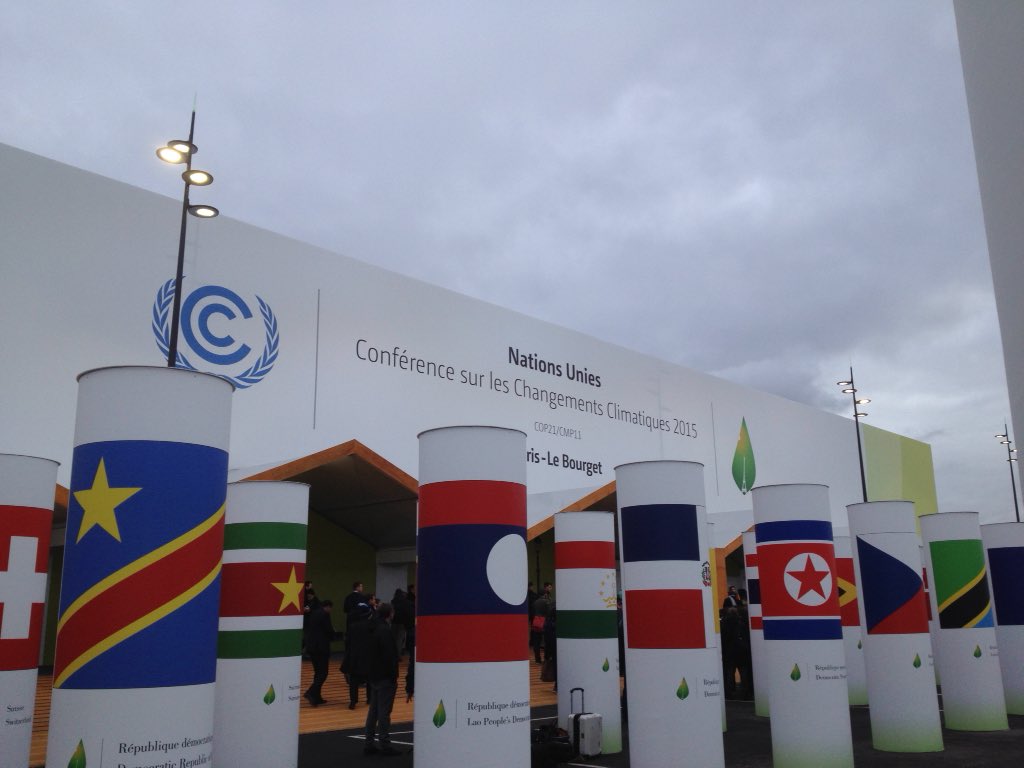
On February 22, 2024, the Tokyo High Court ruled against an appeal in the Yokosuka climate case. The case was filed by 45 residents in Yokosuka City, Kanagawa Prefecture in 2019. The residents sought an injunction to block the construction of 2 coal-fired power plants (CFPPs) which had been evaluated under the Improvement and Replacement Rationalization Guideline (the Guideline) that allows for a simplified Environmental Impact Assessment (EIA) in certain circumstances. The site where the CFPPs were to be constructed housed as many as eight coal plants in the late 20th century when Japan was enjoying a period of high economic growth following the postwar reconstruction process.
At the time of the ruling in the Yokosuka case, three other climate cases seeking injunctions against CFPPs had already been decided in Japan: Sendai Citizens v. Sendai Power Station, Citizens’ Committee on the Kobe Coal-Fired Power Plant v. Kobe Steel Ltd., et al., and Citizens’ Committee on the Kobe Coal-Fired Power Plant v. Japan. The last of these cases was the first climate case in the form of administrative litigation. Therefore, the plaintiffs in the Yokosuka case have largely inherited the legal structure adopted in that case.
This blog post introduces two judgments of the Yokosuka climate case, one issued in January 2023 and the second in February 2024. The January 2023 decision focused on 2 distinctive issues which are explored in this blog: (1) application of the Guideline and (2) the plaintiffs’ standing claims based on specific climate change impacts on fishing as a livelihood. For the background on climate lawsuits in Japan as a whole, please refer to the previous blog, and for the Kobe cases, please refer to this blog.
Background
Immediately after the Fukushima nuclear accident in 2011, all nuclear power plants in Japan were shut down. This led to a considerable decrease in Japan’s overall electricity supply, leading to concerns about potential outages. The Japanese government recognized the urgent need to secure power supply and implemented some measures to expedite the construction of new power plant. One of these was the abovementioned Guideline established in 2012. The Guideline is intended to simplify the EIA process for certain thermal power plant replacement projects to be constructed on the site of a previous plant, where the new plant would have fewer environmental impacts than the previous one.. The Guideline however did not specifically state how to compare the environmental impact of the operation of the power plant before replacement with the environmental impact of the operation of the replacement power plant.
JERA, the defendant in the Yokosuka climate case, determined that the applicable conditions of the Guideline were met in terms of impacts on air quality and warm water discharges. JERA therefore undertook a simplified assessment in accordance with the Guideline.
Regarding the reference time, JERA evaluated the environmental impacts of constructing and operating the two new coal plants against the impacts that had been felt in 1970, when power plant operation at the site was at its maximum, with eight plants in operation . Based on simulation results showing that the environmental impacts expected from the proposed new power plants would be limited. The assessment report was submitted to the Ministry of Economy, Trade and Industry (METI), which issued a final notice only two weeks after receiving it.
In reality, however, the eight old coal-fired power plants had been shut down since 2014. This significantly improved air quality in the local area. By 2016, when the EIA for the proposed construction of the disputed power plants was initiated, the local environmental impacts caused by the former power plants had largely disappeared. Accordingly, the plaintiffs claimed that the assessment report was substantially illegal and sought its cancellation, arguing that the new power plant would cause new negative impacts on the environment in the local area. In other words, the plaintiffs argued the new plant was not a replacement, and thus should have been evaluated through the usual EIA procedures.
To establish standing to challenge the EIA, the plaintiffs argued that they had legal interests cancellation of the plant because of; (i) direct damage to health or living conditions due to air pollution; (ii)direct risk of significant damage to means of livelihood due to warm water discharges; and (iii)direct exposure to significant damage to health and living conditions due to the global warming caused by carbon dioxide emissions from the plant. Specifically, the plaintiffs, some of whom were involved in the fishing industry, argued that rising sea water temperatures associated with climate change would affect marine ecosystems, resulting in damage to the fishing industry and thus have a direct impact on their livelihoods. Additionally, the plaintiffs argued that the exclusion of CO2 from the conducted EIA also based the illegality. Specifically, they claimed that the cumulative environmental impact of the emissions should be examined in the EIA: The estimated annual amount of carbon dioxide was to be 7.26 million tons, equivalent to about 1/5000th of the world’s emissions. Furthermore, the plaintiffs indicated that the installation of CCS stated by JERA did not accompany any actual schedule.
The first instance judgment
On January 27, 2023, the Tokyo District Court rejected the plaintiff’s request to cancel the final notice. Regarding standing, the court held that, even if the new CFPPs released carbon dioxide and thereby contributed to global warming, the plaintiffs could not show that the specific emissions from the new coal plants would cause them damage because climate change is a global phenomenon that is caused by emissions from numerous sources. As for illegality of the issuance of the final notice, the court found that the METI had broad discretion when it came to issuance of the final notice and thus it applied a presumption of validity to METI’s action. Then it noted that the court could only set aside the METI’s decision if (a) there was a misconception of a material fact on which the decision was based, or (b) the content of the decision was significantly lacking in validity in light of socially accepted ideas due to apparently unreasonable evaluation of the facts or not taking into consideration matters that should be considered in the process of judgment. This reasoning was also applied in the judgment in Citizens’ Committee on the Kobe Coal-Fired Power Plant v. Japan.
Under this framework, the court first examined whether the Guideline was applicable to the power plants in question, stating that if the current project met the conditions set forth in the Guideline, that Guideline could be applied unless there were special circumstances that made it inappropriate to apply them. In addition, the court found that, in the case of a replacement project, the power plant company is not required to compare the surveyed data of the environmental impact of the old facility with that of the new facility, nor is it necessary to measure the environmental impact of the old facility when it was in operation. Regarding the warm water discharge, the court stated that the environmental situation immediately prior to the operation of the new facilities was not required to be ascertained to evaluate the environmental impact. Moreover, JERA’s evaluation, based on the calculated value, instead of the real data, was judged to be legitimate.
As for the exclusion of carbon dioxide from the EIA, the court ruled that the exclusion did not constitute illegality because Japan’s current legislation did not recognize carbon dioxide as an element that can cause immediate damage to human health. Additionally, JERA’s plan to reduce the environmental impact of carbon dioxide emissions through the use of CCS power generation facilities also legitimated the EIA, even without concrete schedules.
The second instance judgment
The Tokyo High Court rejected all the appellants’ claims. While mostly following the district court’s decision regarding the application of the Guideline and the warm water discharges, the court further held that it was permissible for the operator to set the reference point for environmental impact comparisons to the time of maximum facility utilization when the eight power plants were in operation.
Discussion
(1) Application of the Guideline
The Guideline at issue in this case were originally established by the Japanese government to accelerate the construction and operation of thermal power plants in response to the tight power supply after the Great East Japan Earthquake of 2011. However, at the time of the Earthquake, the world already shared a sense of urgency regarding climate change issues. Indeed, the Kyoto Protocol entered into force in 1997, with Japan as an Annex 1 country that had specific emission reduction targets.
The Paris Agreement was adopted in 2015 and entered into force the following year in 2016, with Japan also submitting its NDC. At the time of the adoption of the Paris Agreement, approximately three and a half years had passed since the Great East Japan Earthquake, and the power supply in Japan was no longer strained by the increased operation and expansion of thermal power plants after the earthquake. Additionally, some nuclear power plants had restarted operations. Having that situation, new CFPPs were unnecessary.
As climate change countermeasures can only be achieved through the efforts of all actors in the world, Japan’s energy policy concerning domestic electricity supply and demand should have been reviewed in line with the global situation, with an emphasis on reducing consumption and expanding renewable generation. The Guideline, which targets thermal power plants including coal plants, should have at least set up appropriate regulation of GHG emissions as soon as possible after the adoption of the Paris Agreement to meet its target. The two rulings introduced here expand the scope of application of the Guideline, allowing it to be used without any assessment of the status of environmental impacts immediately prior to the operation of a new facility. The rulings also indicate that speculative rather than measured values are sufficient when comparing the environmental impacts of a new facility with those of an old one. This could be denounced as a major deviation from the global trend toward climate change countermeasures. One of the reasons that the judges had to make such a decision might be concern about the impact on other replacement cases.
(2) The plaintiffs’ standing claims
Regarding standing, the two Yokosuka decisions stated that standing required a showing that the carbon dioxide emissions from the power plant would increase the risk that the plaintiffs alone would suffer from climate disasters, reduced fish catches due to rising sea temperatures, and heat stroke, among others, considerably more than other people. This approach was also taken in the first instance judgment of Citizens’ Committee on the Kobe Coal-Fired Power Plant v. Japan. However, due to the unique nature of climate change impacts that affect people worldwide, it is impossible to establish a relationship whereby individual specific emissions directly impact a specific range of persons. Thus, the court’s approach effectively means that no plaintiff will have standing in any climate change litigation.
But it is clear that climate change is impacting individuals and there is a growing consensus around the world that climate change impacts are a violation of human rights. In July 2022, the United Nations declared the right to a clean, healthy sustainable environment. More recently, in the case of KlimaSeniorinnen v Switzerland, the European Court of Human Rightsheld, by failing to adequately address climate change, the Swiss government had violated the human rights of the elderly.
Conclusion
The Yokosuka case challenged the Japanese government’s decision to promote the operation and expansion of thermal power plants as a short-term solution to the energy supply-demand crisis following the Fukushima nuclear accident. With disasters becoming more common due to climate change, similar problems could arise in other countries in the future. The decisions in the Yokosuka case are thus a missed opportunity. Rather than correcting past misguided policies, the court chose to further entrench them, and thus undermined global efforts ensure a more stable climate for the future.





